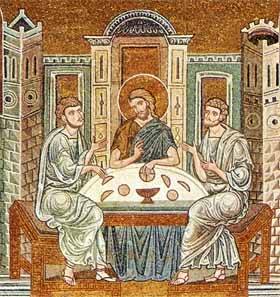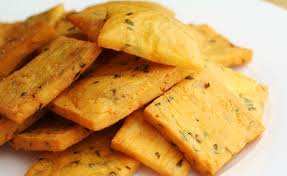
Monreale was my reason for staying a whole day in Palermo.
My cab-driver from the station offered a private tour, for a fairly hefty
price, but the convenience was worth it. Giuseppe spoke good English and looked
like he worked for Tony Soprano. He couldn’t have been nicer. Monreale – as the nasme suggests, on top of a mountain, for defence – was the Norman capital in
the 12th C. Here William II built one of the world’s great churches.
The Basilica/Cathedral of Monreale (still an archiepiscopal
see, although Palermo long-since surpassed it in institutional importance), has
the best mosaics I have ever seen. They are perfectly preserved Byzaantine master[ieces.
They give one an idea of what Hagia Sophia must have been like before iconoclasm.
The pictures give an impression; but to be among them is breathtaking.


The whole interior is covered in perfectly-preserved mosaics. They depict biblical stories from the Patriarchs to Moses to the Gospels, as did the later gothic windows in France. But these representations are far more legible
On the way back, G. stopped at a great, panoramic vista of
all Palermo. This city of about a million (five million all told in Sicily) has
been through Romans and Byzantines and Arabs and Normans and Spanish and
finally modern Italians.
There are lots of narrow back streets, but no really
impressive boulevards, as in Montpellier. But there are citrus groves
everywhere: lemons, oranges, tangerines. And plenty of markets – one every day
right in one of the many ancient city gates, which are still preserved.
The Cathedral of Palermo is dim by comparison, although – as
Giuseppe observed – its exterior is more beautiful. But the baroque interior is
nothing special. The Teatro Massimo
is a big opera house. The Royal Palace has a Norman section and a Bourbon
(Spanish) section.
The Kingdom of the Two Sicilies had its capital in Naples,
but kept the palace in Palermo for state occasions, I guess.
I kept thinking of Giuseppe di Lampedusa and his middle-aged
Prince Fabrizio of Salina, who on the way to see his mistress, would get out of
his carriage to kneel on the pavement when the Bl. Sacrament was carried by on
the way to a death bed. (The priest used to be escorted by a little procession,
preceded by a ringing bell, to alert the faithful.) There are still plenty of
carriages of the kind in which the nobleman rode – now for tourists, of course.
One of the churches – S. Cataldo – is a handsome old former
mosque.
I remember stopping in Taranto in ’78 on the Feast of S. Cataldo, who
is apparently the patron of that Apulian city. Big festivities, in which his silver statue is carried through the streets.
G. told me
that Palermo’s patroness is Sta. Rosalia. He also showed me the plaque in the
Piazza Marina honor of the Italian-American investigator, Joe Petrosino, who was
assassinated by the mafia when he came to investigate them in 1909.
The four-star hotel is a splurge – big and modern. The Tyrrhenian
Sea fills my window, which faces directly north from the 11th floor.
Beautiful and sunny today, the mistral
blowing steadily from colder places. So, there’s no hanging out on the terrace
or beach, but I think the temperature is about the same as Barcelona. Tomorrow
to Trapani and then back to Paris. One day of being driven around a Sicilian
city confirms the wisdom of my decision not to rent a car here.
Sky Cable has all the European news channels, plus FOX and
CNBC, but no CNN. Also a direct, live Vatican feed. I was able to watch vespers
and Solemn Te Deum from St. Peter’s.
The Pope wore a gorgeous gold cope and mitre, deacons’ dalmatics matching. Lots
of cardinals and monsignori. The
deacon carrying the Bl. Sacrament, wore an enormous humeral veil, the size of
an altar cloth, and an attendant held an ombrellino
over him. Choir was dramatic, Italianate. Another vimpa for the papal mitre-bearer, but no double-wheelies! The
occasion, I guess, was the eve of wha5t the Romans now call the Feast of the
motherhood of Mary. [January 1 – eight days after the Nativity – used to be
called Circumcision. We changed it to Holy Name, which is what the Romans used
to call it, before they decided Mary needed more attention. Somewhere in there,
I seem to recall it was called the Feast of the Holy Family.] The Latin Divine
Praises now include something about Mary’s Assumption, if I heard correctly.
Dinner was at a Ristorantino
Agrodolce, right next to the hotel (which is now full of Germans in mink).
I walked a few block up the shabby street, risked my life crossing some – in
the striped crosswalks, which speeding Sicilians give up to pedestrians with
great reluctance, to find only a EUR 40
menu that didn’t look that interesting. I am very happy with my choice, because
I got some authentic Sicilian food, I think – the kind Inspector Montalbano is
always finding Adelina has left for him in his refrigerator:



1.
Antipasto of assorted Sicilian dishes
a.
caponata
– a cold eggplant-and-olive concoction that is a signature of Sicilian cooking
b.
pannele
– garbanzo bean fritter (flat)
c.
stiglioni
– another, heftier fritter with some kind of creamy, vegetable filling
2.
Casarecce
– a pasta that was new to me – a kind of double-barrelled spaghetti, cut in
two-inch lengths – al dente with a
fish and eggplant sauce. with a nice aglio olio sauce.

3.
Canolo
again, only this time with ricotta and crust broken up. It was the waiter’s
suggestion. Maybe they were trying to get rid of it, but that is fine with me.
It was divine.
No comments:
Post a Comment